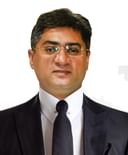Spinal Bifida - Know The Signs That Indicate It!
The medical term ‘spina bifida’ or spinal bifida refers to a congenital defect in the spine. In simpler terms, spina bifida is a defect in the neural tube. Based on the severity of this disease, spina bifida can be divided into three different types:
- Myelomeningocele
- Meningocele
- Occulta
The symptoms of spina bifida vary depending on each of these three types. Let's take a closer look at its symptoms here:
Myelomeningocele
Myelomeningocele is the most severe form of spina bifida. In this type of neural defect, spinal canal of the baby remains open in the middle or lower back along a few vertebrae. Due to this opening, a sac is formed at the back of the baby at birth, which exposes the baby to several life-threatening infections.
Some of the common symptoms of this type of spina bifida are:
- Seizures
- Presence of uneven hips
- Deformed feet
- Curved spine or scoliosis
- Bladder and bowel problems
- Muscle weakness
- Paralyzed leg muscles.
Physical deformities from moderate to severe levels are also very common in this type of spina bifida.
Meningocele
Meningocele is a ratherrare form of spinal bifida in which a sack of fluid stays in open at the back of the baby. Here the protective membranes that usually stay around the spinal cord push out through the vertebrae’s opening. Though this sack contains no part of the spinal cord, it may cause minor disabilities.
Some common symptoms of this kind of spina bifida are:
- Membranes forming a visible sack on the back at birth
- Presence of a small opening in the baby's back
The good news is that this sack can be removed through surgery without hampering the normal development of the spinal cord.
Occulta
Spina bifida occulta is the mildest form of spina bifida, which, in majority of the cases, often stays hidden as its symptoms are rarely visible. As it doesn’t even cause any form of disabilities, it generally goes unnoticed. It doesn’t cause any damages to the nerves or the spinal cord.
Some common symptoms of occulta are:
- Presence of a gap between the vertebrae
- An area on the back formed with extra fat
- Acluster or small group of hair on the back
- A dimple or birthmark on the back.
In this kind of spina bifida, neither any sack of fluid is formed, nor are there any visible opening in the back. Sometimes, people who have spina bifida are not aware of it due to its minimal symptoms.
Spina bifida usually affects a child before birth, when the brain or the cord or the protective covering over them fails to develop completely. Knowing about the symptoms can be one of the best ways to identify and diagnose this disease and opt for proper treatment solutions. If you wish to discuss about any specific problem, you can consult a Neurosurgeon.



+1.svg)
